Search
Did you mean: The Dagda?
Search Results
![Throne Dais of Shalmaneser III [North Face, East End]](https://www.worldhistory.org/img/c/p/360x202/10523.jpg?v=1618801204)
Image
Throne Dais of Shalmaneser III [North Face, East End]
This scene is part of a long tributary one where the king receives tribute from Qalparunda of the Land of Unqi (a Luwian Syri-Hittite state, also known as Pattin). Here, the Assyrian king, Shalmaneser III (r. 858-824 BCE), stands below a...
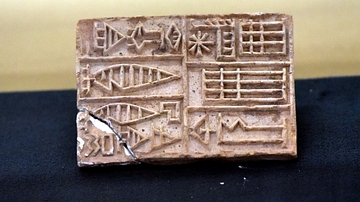
Image
Brick Stamp of Shar-Kali-Sharri
The cuneiform inscription on this brick stamp mentions the name of the Akkadian king Shar-Kali-Sharri (reigned 2217 - 2193 BCE) and his building work of the temple of Enlil. From Southern Mesopotamia, Iraq. On display at the Iraq Museum...
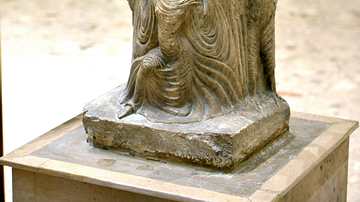
Image
Statue of Assur Bel from Hatra
This limestone statue, now headless, was found in the 5th temple, and probably depicts Assur. On the other hand, some scholars thinks this statue is of Za'im Mu'la. It depicts a male figure wearing full military attire and armor (very similar...
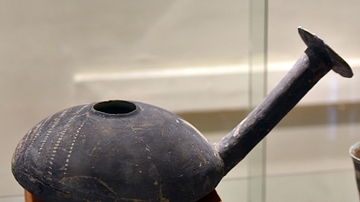
Image
Ewer from Eridu
This pottery jug or ewer is somewhat oval in shape and has a relatively long and straight spout. From Eridu (Tell Abu Shahrain), southern Mesopotamia, Iraq. 3500-2800 BCE. On display at the Iraq Museum in Baghdad.
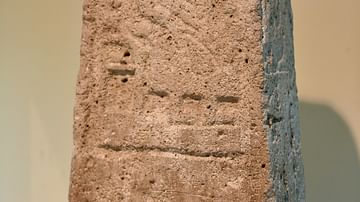
Image
Obelisk of Ur-Nanshe from Lagash
This large white limestone obelisk was found in Lagash, southern Mesopotamia, in modern-day Iraq. All of the 4 aspects of the obelisk were carved, in reliefs, with different scenes. The frontal surface depicts the Sumerian goddess Nisaba...
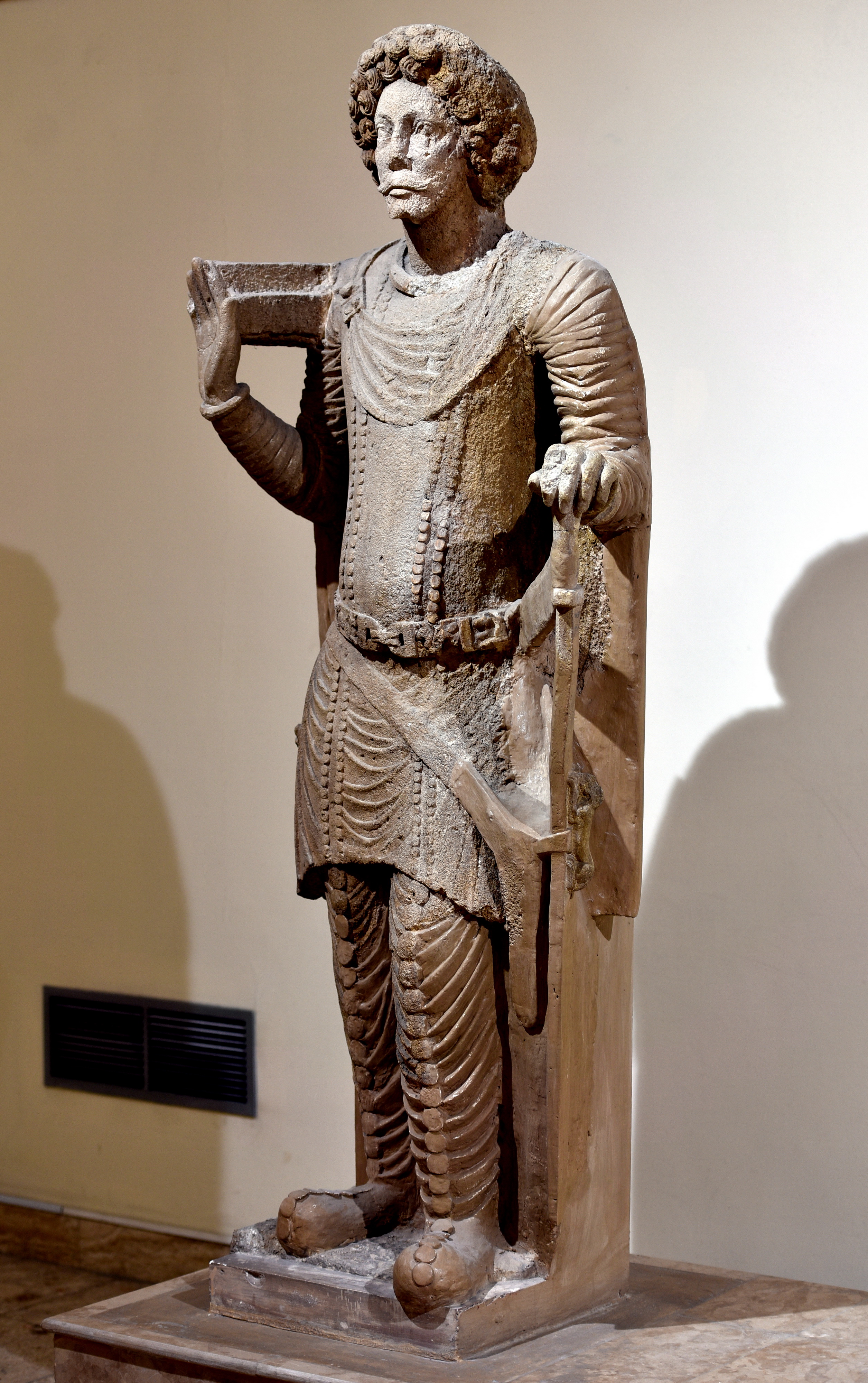
Image
Statue of a Young Military Commander, Hatra
This is a very unique statue found in the 4th temple. This young man wears his full military uniform, which was exquisitely carved. He rests his left hand on the pommel of the hilt of a long sword while the right hand is raised in salutation...
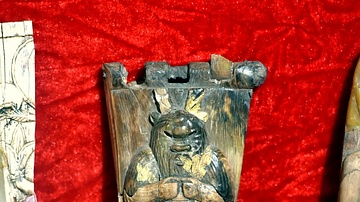
Image
Ivory Horse Frontlet from Nimrud
This ivory piece is part of the so-called "equestrian bridle-harness ornaments". It represents the lower part of a hinged frontlet, virtually complete. Most of the hinges and much of the iron pin have survived. A figure of the Egyptian...
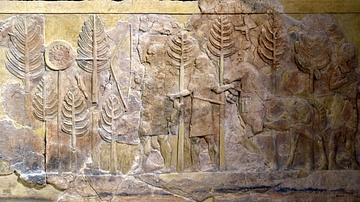
Image
Assyrian Hunters from Khorsabad
This relief is one of 3 large slabs depicting Assyrian men, with their horses, hunting in what appears to be a pine forest. From the Royal Palace of Sargon II at Khorsabad, in modern-day Nineveh Governorate, Iraq. Circa 710 BCE. On display...

Image
Lion-Hunt Scene from Khorsabad
This survived alabaster bas-relief was found in Khorsabad (ancient Dar-Sharrukin, Mesopotamia, Iraq). An Assyrian king, probably Sargon II (r. 722-705 BCE), shoots an arrow and a lion (hit by another arrow) appears. Late 8th century BCE...
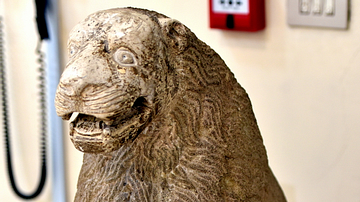
Image
Statue of a Lion from Hatra
This limestone statue of a lion (of a pair) was guarding the main entrance to the 4th temple at Hatra dedicated to the goddess Ishtar. From Hatra, Ninawa Governorate, Iraq. Parthian period, 1st to 3rd century CE . On display at the Iraq Museum...